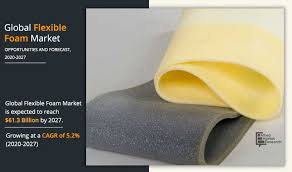
The Versatility of Flexible Foams in Everyday Life
Flexible foams are a type of polyurethane foam that is widely used in various applications due to their unique properties and versatility. These foams are known for their flexibility, cushioning, and comfort, making them indispensable in many aspects of our daily lives.
Comfort and Support
One of the key benefits of flexible foams is their ability to provide comfort and support. Mattresses, pillows, and furniture cushions often use flexible foams to offer a soft yet supportive surface for relaxation and rest. The flexibility of these foams allows them to contour to the body’s shape, ensuring a comfortable experience.
Sound Absorption
Flexible foams are also excellent at absorbing sound, making them ideal for use in acoustic applications. Whether it’s in recording studios, home theaters, or automotive interiors, flexible foam helps reduce noise levels by absorbing unwanted sound waves and minimizing reverberation.
Impact Protection
In industries such as automotive and sports equipment, flexible foams play a crucial role in providing impact protection. Helmets, knee pads, and car interiors are often lined with flexible foam to cushion impacts and reduce the risk of injury. The energy-absorbing properties of these foams help dissipate impact forces effectively.
Insulation
Another important application of flexible foams is insulation. These foams have excellent thermal insulating properties, making them ideal for use in buildings, refrigeration units, and HVAC systems. Flexible foam insulation helps maintain desired temperatures while reducing energy consumption.
Conclusion
Flexible foams are an essential component in numerous products that we encounter every day. Their versatility, comfort, support, sound absorption capabilities, impact protection properties, and insulation qualities make them indispensable materials across various industries. As technology advances and new innovations emerge, the role of flexible foams in enhancing our quality of life continues to expand.
5 Essential Safety and Maintenance Tips for Handling Flexible Foams
- Ensure proper ventilation when working with flexible foams to avoid inhaling harmful fumes.
- Use appropriate protective gear such as gloves and goggles to prevent skin contact and eye irritation.
- Store flexible foams in a cool, dry place away from direct sunlight and heat sources to maintain their quality.
- Follow manufacturer’s instructions for cutting and shaping flexible foams to achieve desired results.
- Dispose of leftover foam scraps responsibly by recycling or following local waste disposal guidelines.
Ensure proper ventilation when working with flexible foams to avoid inhaling harmful fumes.
It is crucial to ensure proper ventilation when working with flexible foams to prevent inhaling harmful fumes. Adequate ventilation helps disperse any potentially toxic gases or vapors that may be released during the handling or processing of flexible foams. By maintaining good airflow in the work area, you can protect yourself from respiratory issues and other health hazards associated with inhaling these fumes. Prioritizing ventilation when working with flexible foams is essential for creating a safe and healthy environment for both yourself and others.
Use appropriate protective gear such as gloves and goggles to prevent skin contact and eye irritation.
It is important to use appropriate protective gear such as gloves and goggles when working with flexible foams to prevent skin contact and eye irritation. The chemicals used in the production of these foams can potentially cause skin irritation or allergic reactions upon contact. Additionally, splashes or fumes from the foam can irritate the eyes if proper eye protection is not worn. By taking these precautionary measures, individuals can ensure their safety while handling flexible foams and minimize the risk of any adverse health effects.
Store flexible foams in a cool, dry place away from direct sunlight and heat sources to maintain their quality.
To ensure the longevity and quality of flexible foams, it is essential to store them in a cool, dry environment away from direct sunlight and heat sources. Exposure to heat and sunlight can cause the foam material to degrade over time, leading to a loss of its original properties such as flexibility and cushioning. By storing flexible foams in a suitable location, you can preserve their quality and extend their lifespan for optimal performance in various applications.
Follow manufacturer’s instructions for cutting and shaping flexible foams to achieve desired results.
It is crucial to follow the manufacturer’s instructions when cutting and shaping flexible foams to ensure that the desired results are achieved. Manufacturers provide specific guidelines on how to work with flexible foams effectively, taking into account factors such as foam density, thickness, and intended use. By adhering to these instructions, you can optimize the performance and durability of the foam while achieving the desired shape and dimensions for your project.
Dispose of leftover foam scraps responsibly by recycling or following local waste disposal guidelines.
It is important to dispose of leftover foam scraps responsibly by recycling or following local waste disposal guidelines. Recycling foam scraps helps reduce environmental impact by diverting waste from landfills and promoting sustainability. By following proper disposal practices, we can contribute to a cleaner environment and ensure that foam materials are reused or disposed of in an environmentally friendly manner.
